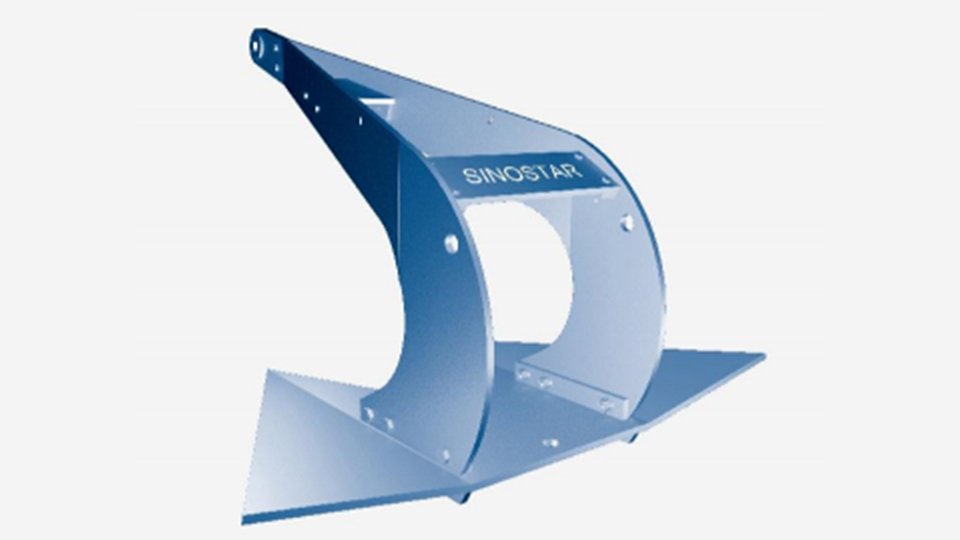Stingray Anchor, AQUA Mooring Helper
Stingray anchor, also known as dual-shank anchor, is a special anchor designed for a variety of marine environments, especially in sandy or muddy seabeds. Its unique appearance resembles a stingray, hence the name.
Ⅰ. Stingray anchor in offshore boats and marine aquaculture
In the field of offshore boats and marine aquaculture, stingray anchors play a vital role with their compact and lightweight design and excellent grip performance.
1. Temporary fixation of offshore boats: During offshore operations or mooring, stingray anchors can quickly fix the ship and effectively prevent drift caused by wind and waves.
During emergency braking, when encountering emergencies, stingray anchors can be quickly put into use to provide a stable anchoring point for the ship and ensure the safety of the ship.
2. Fixing of aquaculture facilities (cages and other facilities) for marine aquaculture: In sandy waters, the panel of the stingray anchor is relatively large, which can better fix aquaculture cages, buoys and other facilities to avoid displacement caused by water flow or wind and waves.
The anti-typhoon design is also very professional: in the face of extreme weather such as typhoons, its deep burial mechanism and durable materials can ensure the safety of aquaculture facilities, and better reduce disaster losses compared to single-handled sardine anchors.
Ⅱ. Design features of stingray anchors
1. Structural optimization: adopting a lightweight design concept, the weight range is concentrated between 0.5-5 tons, which is convenient for manual or mechanical operation.
2. Modular design: The split structure allows users to flexibly adjust the size of the anchor body according to actual needs to adapt to different sand conditions.
3. It has 2 handles, and the bottom area in contact with the sand is larger, which increases the strength of the sand anchor ground and provides strong tensile resistance.
4. It is also welded with high-strength steel plates to ensure that the anchor body still has good durability under harsh sea conditions.
5. The surface is painted to effectively resist seawater corrosion and extend the service life of the anchor.
6. The split design of the anchor body can be disassembled into multiple parts, which is convenient for container transportation, saving space and cost. After receiving the anchor body, the user can quickly complete the assembly according to the detailed instructions.
III. Application suggestions for stingray anchors
1. Prefer sandy sea areas or soft bottom environments, and avoid using them in muddy or rocky areas. According to the number of marine aquaculture facilities and the surrounding seabed environment or the weight of the ship, reasonably select a stingray anchor of appropriate tonnage.
2. The operation needs to be standardized during use. When buried, ensure that the anchor body is vertically inserted into the sand to prevent tilting and causing a decrease in grip. Regularly check the corrosion of the anchor body, and perform maintenance or replacement in time to ensure the performance of the anchor.
3. Combined use strategy. In extreme weather conditions, it can be used in combination with other types of anchors (such as grip anchors) to improve overall safety.
V. Summary
The Stingray anchor is an ideal choice for offshore boats and marine aquaculture due to its compact and lightweight design, double-rod large-area anchor plate design, reliable grip performance and convenient transportation. However, users need to fully understand its geological adaptability and burial depth requirements before use, and choose it reasonably based on the actual scenario to give full play to its maximum efficiency and provide solid protection for marine operations and aquaculture activities.
Learn More:
MK5 Anchor: a Key Solution for Maritime Stability : MK5 anchorIn the fields of offshore engineering and merchant shipping, the choice of anchorage is crucial for ensuring the safety of vessels and structures.
Use And Design Features of Sardin Anchors : Sardin anchors are mainly used in offshore boats and marine aquaculture



